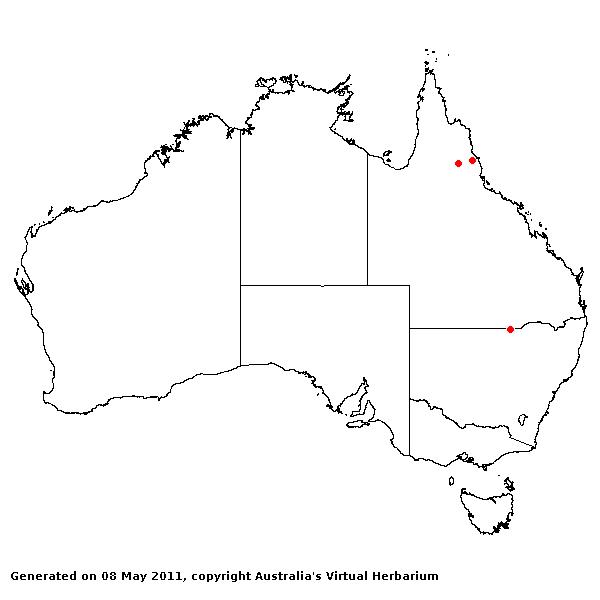Perotis indica* (L.) Kuntze. Rev.
Gen. Pl. 2: 287 (1891).
Classification. (GPWG 2001) : Subfamily
Chloridoideae. Cynodonteae.
Basionym and/or
Replacement Name: Anthoxanthum
indicum L., Sp. Pl. 1: 28 (1753).
Type of Basionym or
Protologue Information: Sri Lanka:, Hermann s.n. (HT: BM).
Key references
(books and floras): [2002] D.Sharp & B.K.Simon, AusGrass, Grasses of
Australia.
Habit. Annual.
Culms geniculately ascending, 15–40 cm tall. Mid-culm nodes glabrous. Ligule an
eciliate membrane. Leaf-blades erect or spreading, lanceolate or ovate, flat or
involute, 1–5 cm long, 2–10 mm wide.
Inflorescence.
Inflorescence solid, a raceme. Racemes 1, 2–20 cm long.
Spikelets.
Spikelets pedicelled. Fertile spikelets 1-flowered, comprising 1 fertile
floret(s), without rachilla extension, linear or lanceolate, terete, 6.5–30 mm
long.
Glumes. Glumes
similar, firmer than fertile lemma. Lower glume lanceolate, membranous, without
keels, 1 -nerved. Lower glume surface indumented. Lower glume apex awned. Upper
glume lanceolate, 1.5–2.5 mm long, membranous, without keels, 1 -nerved. Upper
glume surface scabrous, indumented. Upper glume apex awned.
Florets.
Fertile lemma 0.5–1 mm long, without keel, 1 -nerved. Anthers 3.
Continental
Distribution: Africa, Temperate Asia, Tropical Asia, and Australasia.
Australian
Distribution: Queensland.
Queensland:
Cook.
Notes.
Introduced; Only one locality reported in N Qld, but species is definitely
naturalized there; distributed from India to E. China (Hopeh), throughout
Malesia; introduced elsewhere in tropical countries. In Australia, known from
open grassy Eucalyptus woodland on sandy loam; elsewhere it grows in
sandy soil near the coast, under Casuarina sp., in coconut plantations,
dry grasslands, usually at low altitudes, rarely as high as 1065 m in Malesia.



